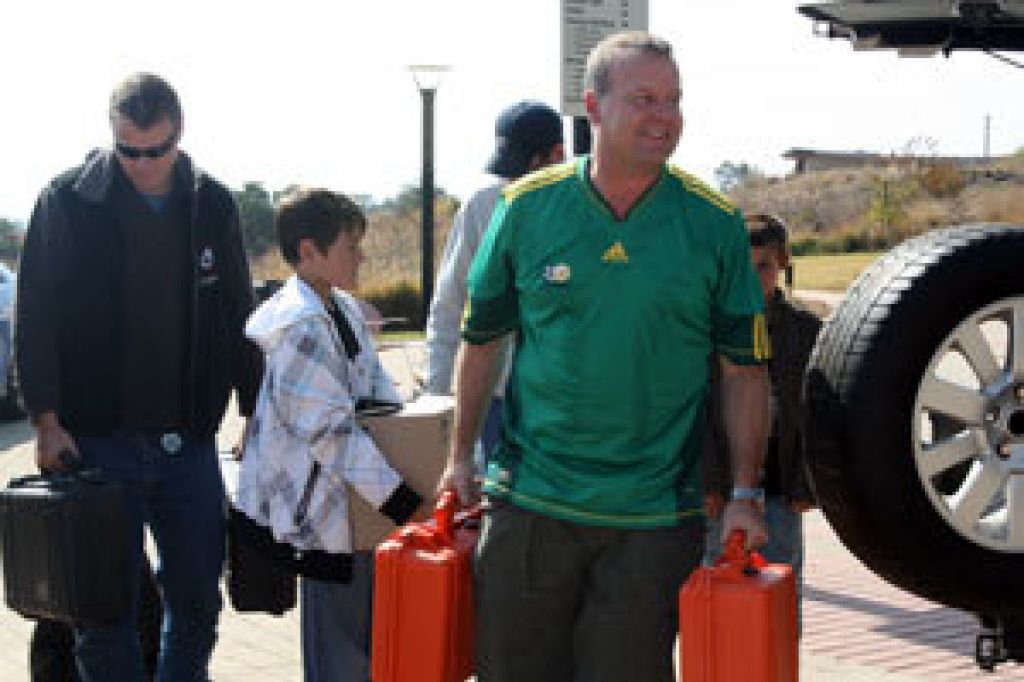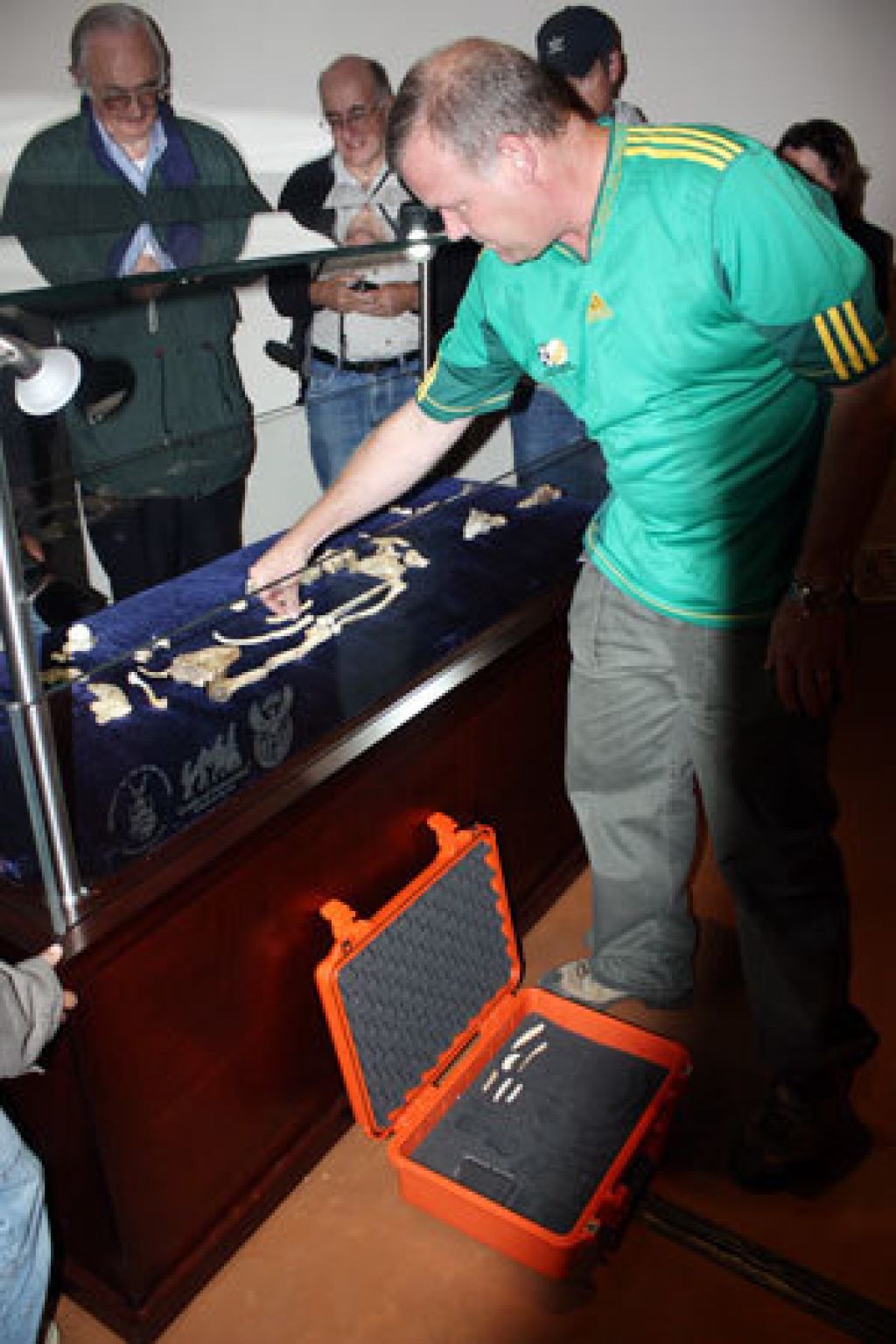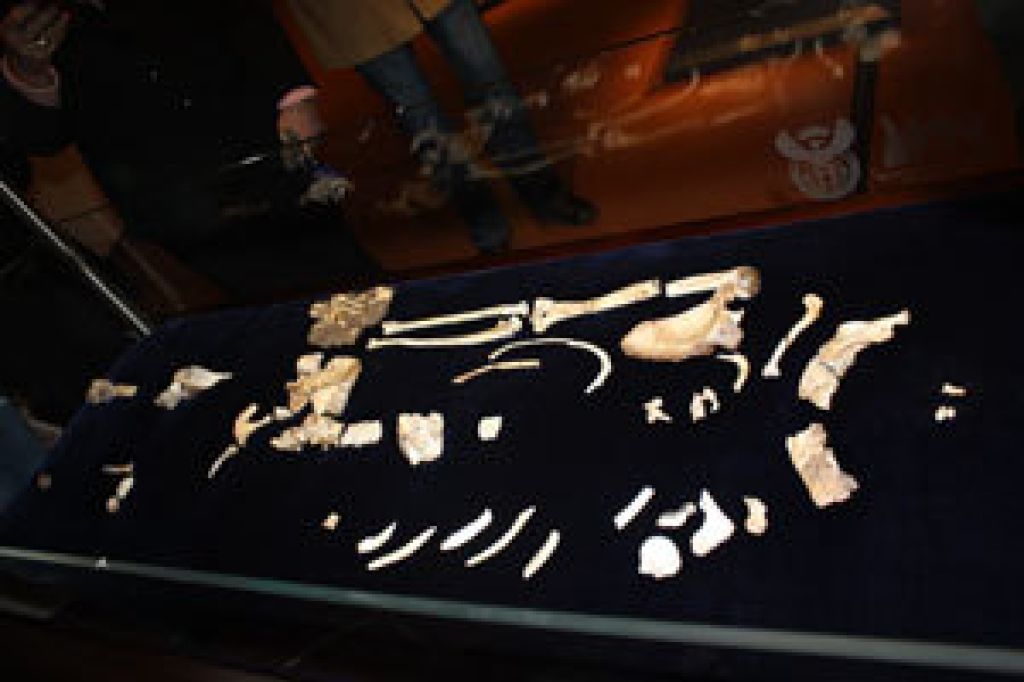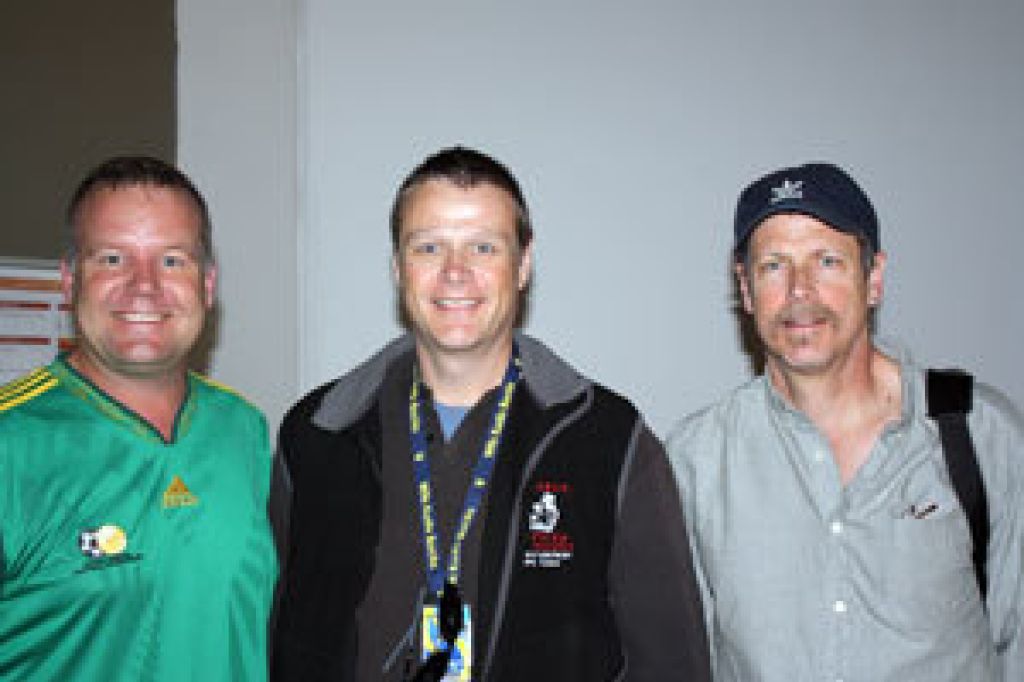Female Australopithecus sediba fossil unveiled at Maropeng

By Itumeleng Makgobathe
Earlier today at Maropeng in the Cradle of Humankind, Palaeoanthropologist Professor Lee Berger laid out, for the first time ever in public, the fossilised skeleton of a female Australopithecus sediba, discovered in the nearby Malapa Caves in 2008.
Matthew Berger, Berger’s son, found the first Australopithecus sediba fossil, of a young boy aged between nine and 13 years old. The boy, recently named “Karabo” in a public competition, was also unveiled at Maropeng in April this year.
The partial skeletons are described in two papers in the prestigious journal, Science, as a new species of hominid or early human ancestor, called Australopithecus sediba (Australopithecus meaning “southern ape” and sediba meaning “natural spring”, or “well”, in South Africa’s seSotho language).
Berger suggests that these species, which have been dated to just under 2-million-years old, might be candidates for the transitional species between the Southern African hominid, Australopithecus africanus (of which the “Taung Child” and “Mrs Ples” are examples) and either Homo habilis, or even a direct ancestor of Homo erectus (including specimens such as “Turkana Boy”, “Java Man”, and “Peking Man”). Our species, Homo sapiens, is today the only remaining hominid.
According to Berger, the scientific world has agreed that this is a new species, but whether or not the genus is correct is being debated.
“One half wants it under the genus Homo while the other half wants it under Australopithecus. We think we have rightfully put it in the correct place, under the genus Australopithecus,” explains Berger.
The exhibition of the female Australopithecus sediba starts tomorrow, June 11, and will coincide with the start of the first ever African 2010 FIFA World Cup™.
Sporting his Bafana Bafana T-shirt, Berger said, “What’s more incredible is that we will be growing her skeleton throughout the duration of the World Cup.” This means that more parts of the skeleton will be added as the weeks go by.
The significance of the fossils being on display during the greatest football tournament is great because, “This [the World Cup] is about South African heritage and the motto of Maropeng is ‘Welcome Home’ and this is the chance for visitors coming to the World Cup in South Africa to see the real thing [fossils] from the spot they come from,” elaborated Berger.
Berger helped install the new exhibit today with the help of two colleagues, Professor Darryl de Ruiter, who like Berger works at the University of the Witwatersrand and is in charge of the fragments of the skull that have been found to date, and Professor Steven Churchill, who is affiliated with Duke University in the USA, who co-ordinates the study of the post-cranial skeleton, which includes everything from the neck down.
They are a part of a group of about 70 scientists working on the Australopithecus sediba fossils, and which comprises “probably the biggest palaeontological project in the world”, added Berger.
In response to which of the two skeletons was the most complete, Berger said, “They are kind of competing with each other, because we keep adding to both. As we find more female parts, we are also finding more male parts.”
With continuing research, it might be possible to uncover more about the relationship between the female and the male, who were found 50 cm apart and who Berger believes died at the same time.
“If they operated like modern primates they were, almost certainly, from the same troop and, almost certainly, related,” said Berger.
Berger also said it is also highly likely that the female fossil gave birth. “We can look at her features within the pelvis to tell whether or not she gave birth.” And from what the team can conclude, he said, she probably did give birth because of the separation and scars on her pelvis.
There is certainly more to come from this find and “to think that we didn’t know and the world didn’t know, until April 8, that an entirely new species of hominid existed and because of places like Maropeng and the Cradle of Humankind, now the world can see it!” said Berger.
More coverage of the Australopithecus sediba fossils on our site:
- Like son, like (possible) mother – a second sediba fossil goes on display at Maropeng
- The Standard Bank PAST lecture unveils “Karabo”
- Exciting new fossil discovery published in pre-eminent journal, Science
- Find a name for fossil boy and win R75 000
- Exciting new fossils unveiled at Maropeng
- Maropeng hosts the unveiling of an unprecedented fossil discovery
- Australopithecus sediba unveiling - photo essay
- The sediba fossils on display at Maropeng
- The story of Australopithecus sediba
- Lee Berger: the man behind the sediba fossils
- Presenting Australopithecus sediba


